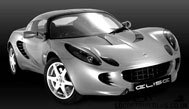andyd
|
| posted on 29/11/06 at 09:23 PM |

|
|
Why not symmetrical wishbones?
Ok, I've not thought much about this before posting the question so I make regret it but...
Is there a good reason for making the top and bottom wishbones different lengths? I'm not talking locost here. If the front part of a chassis
was square (i.e. a cube of sorts) could the wishbones be symmetrical?
[awaits the obviousness that I've not seen to be pointed out  ] ]
Andy

|
|
|
|
|
carnut
|
| posted on 29/11/06 at 09:27 PM |

|
|
Its so u dont get a track change. Make a cardboard model with pinned joint and see what happens with different length wishbone lengths. This is a
really good way of visualising whats going on.
Carnut
|
|
|
andyd
|
| posted on 29/11/06 at 09:31 PM |

|
|
I knew there'd be a good reason for not having them the same. 
Out with the balsa wood and coat hangers then! 
Thanks.
Andy

|
|
|
BenB
|
| posted on 29/11/06 at 09:32 PM |

|
|
I just work on the principal that working out wishbone lengths is a fairly complicated process and takes a fair amount of work. IIRC when Fisher
changed to wishbones on the Fury the calculations took many hours to get right.
So if they do all that work and then say unequal length is the way forward I won't argue 
|
|
|
hillbillyracer
|
| posted on 29/11/06 at 09:33 PM |

|
|
Mainly because if they were equal lengths the wheel would roll over at the same angle as the body as you went round a corner giving positive camber on
the tyre with most work to do & negative on the one with less to do
|
|
|
Stu16v
|
| posted on 29/11/06 at 09:45 PM |

|
|
quote:
Originally posted by hillbillyracer
Mainly because if they were equal lengths the wheel would roll over at the same angle as the body as you went round a corner giving positive camber on
the tyre with most work to do & negative on the one with less to do
Not if you made them converge a degree at the chassis side...
Dont just build it.....make it!
|
|
|
hillbillyracer
|
| posted on 29/11/06 at 10:23 PM |

|
|
True but it has a greater effect when the top wishbone is shorter, plus the KPI is always going to mean the top balljoint is closer to the body.
|
|
|
Stu16v
|
| posted on 30/11/06 at 07:13 PM |

|
|
quote:
Originally posted by hillbillyracer
True but it has a greater effect when the top wishbone is shorter, plus the KPI is always going to mean the top balljoint is closer to the body.
We are now moving to a different part of the wonderful world of suspension design.
KPI doesnt necessarily have to affect/be affected by wishbone lengths. But it does tend to be the most cost effective, and lightest option...
Dont just build it.....make it!
|
|
|
cymtriks
|
| posted on 2/12/06 at 10:03 AM |

|
|
I've done the calcs.
Track
track changes are always very small with any reasonable layout.
Roll Centre
roll centre movements both laterally and vertically can be very large. Unequal length wishbones do a much better job in this respect especially with
lower roll centres. Equal length wishbones work reasonably well with a higher roll centre. If you look under some cars you will often find that the
front (lower rc) wishbones are unequal but the rear wishbones (higher rc) are much closer in length.
Camber change
This is nearly linear with equal length wishbones but increases with movement with unequal length wishbones.
Effective Swing Axle
This is nearly constant with similar length wishbones but gets shorter with movement for unequal length set ups.
It would seem that there are two possible aims in suspension designs-
To locate the roll centre at the expense of everything else
or
To provide an increasing rate of camber change at the front (or non driven end) with a very stable rate of change at the rear (or driven end)
The second explanation is speculative, it fits the observations but you won't find it any of the popular texts.
|
|
|









